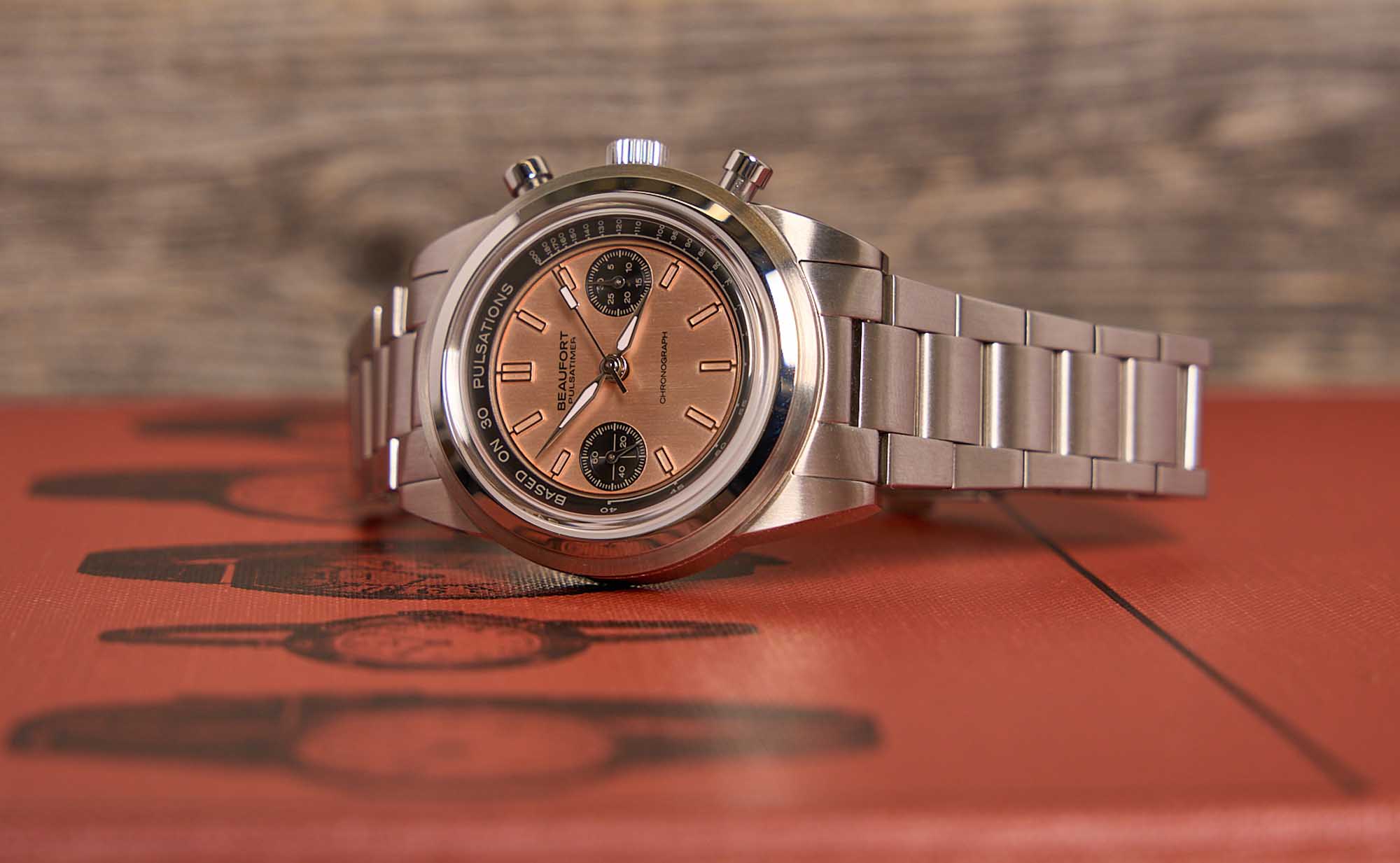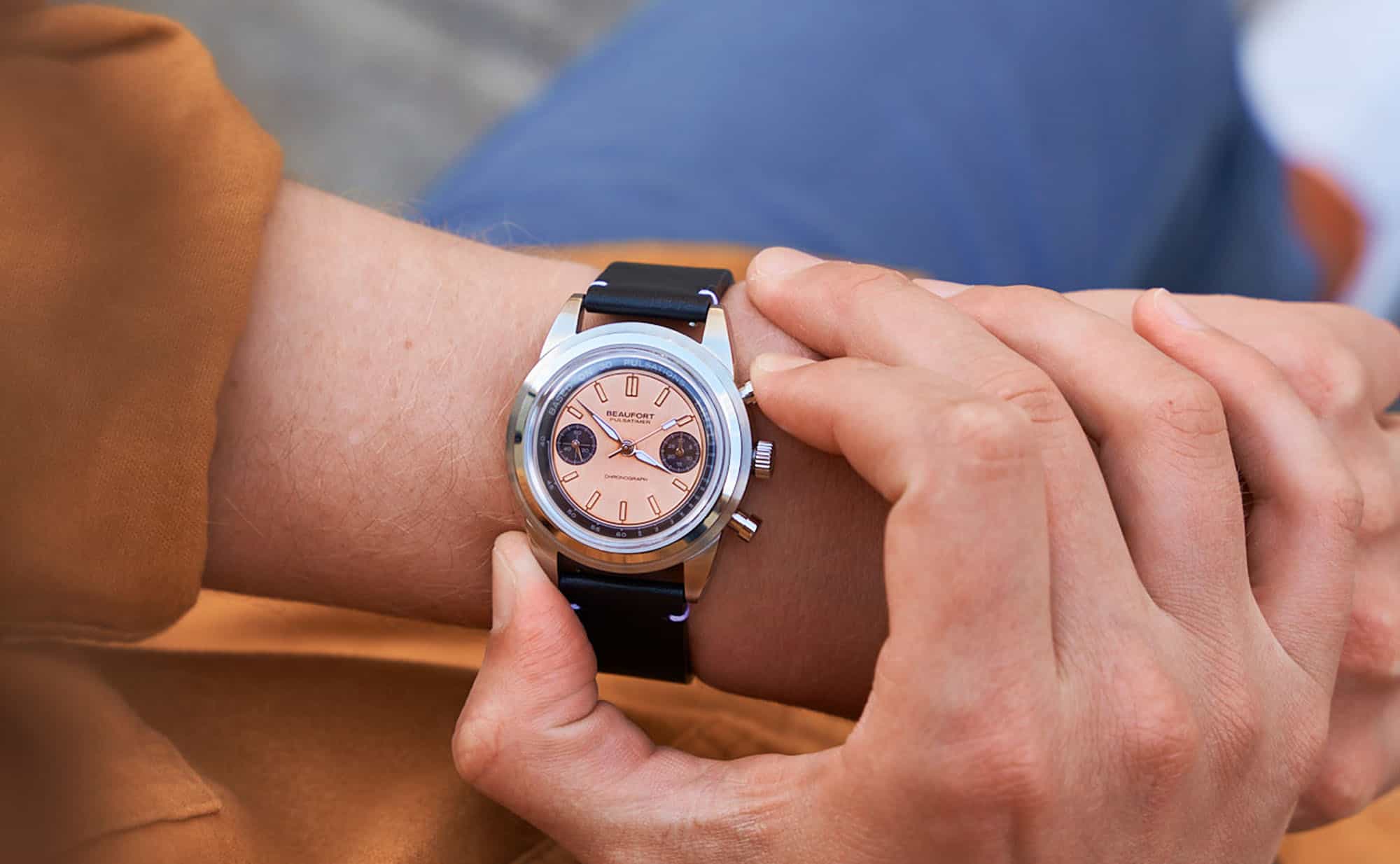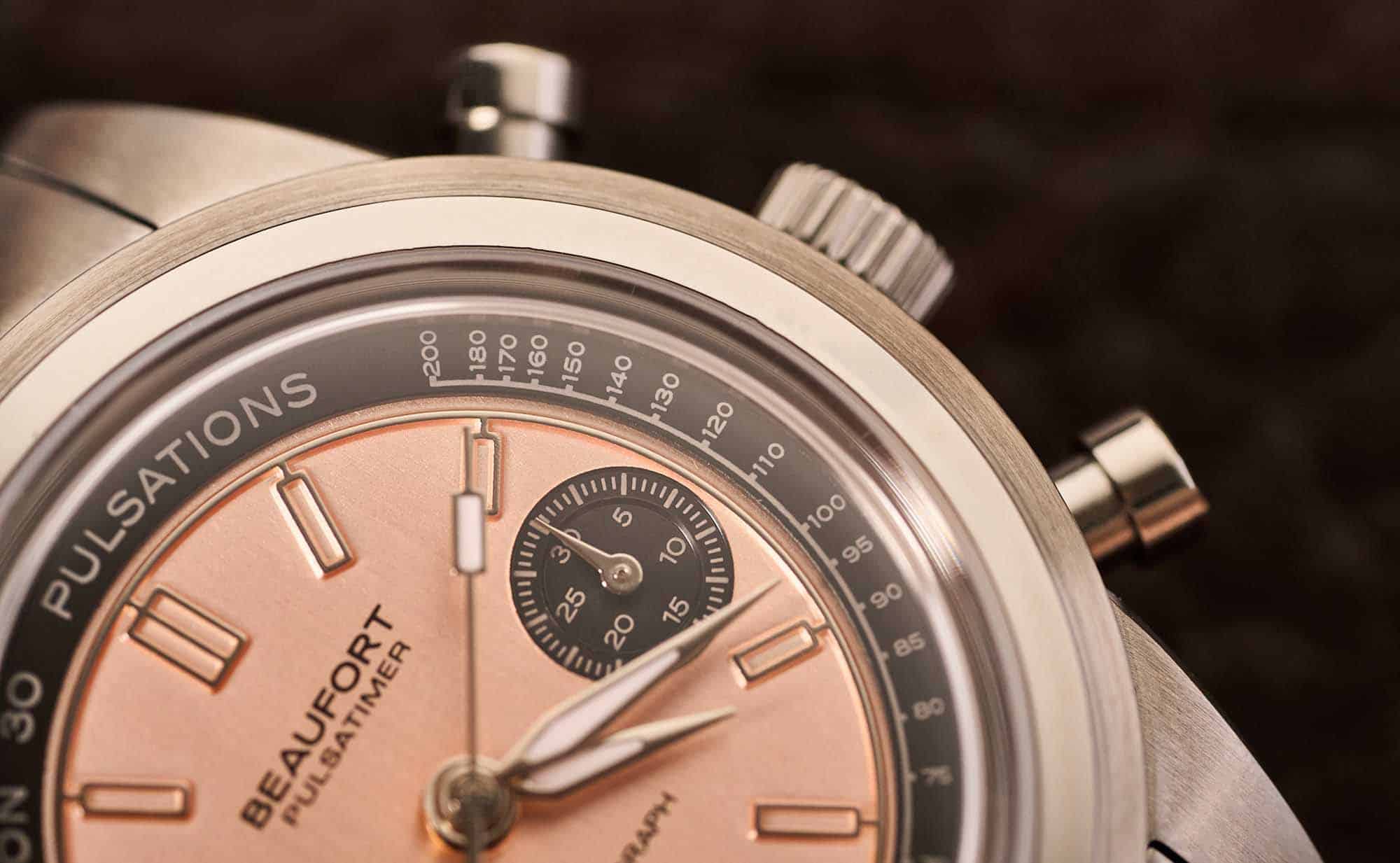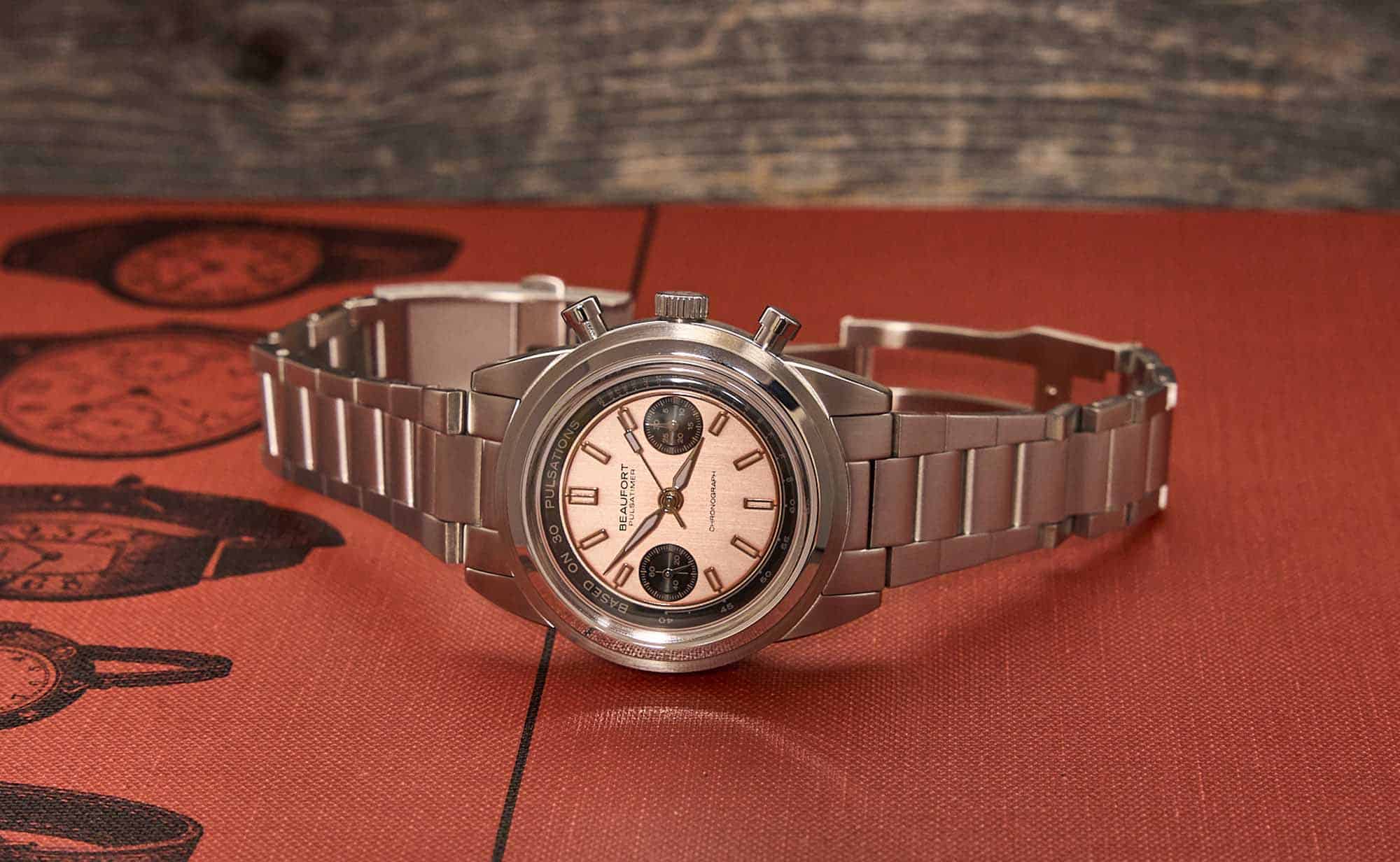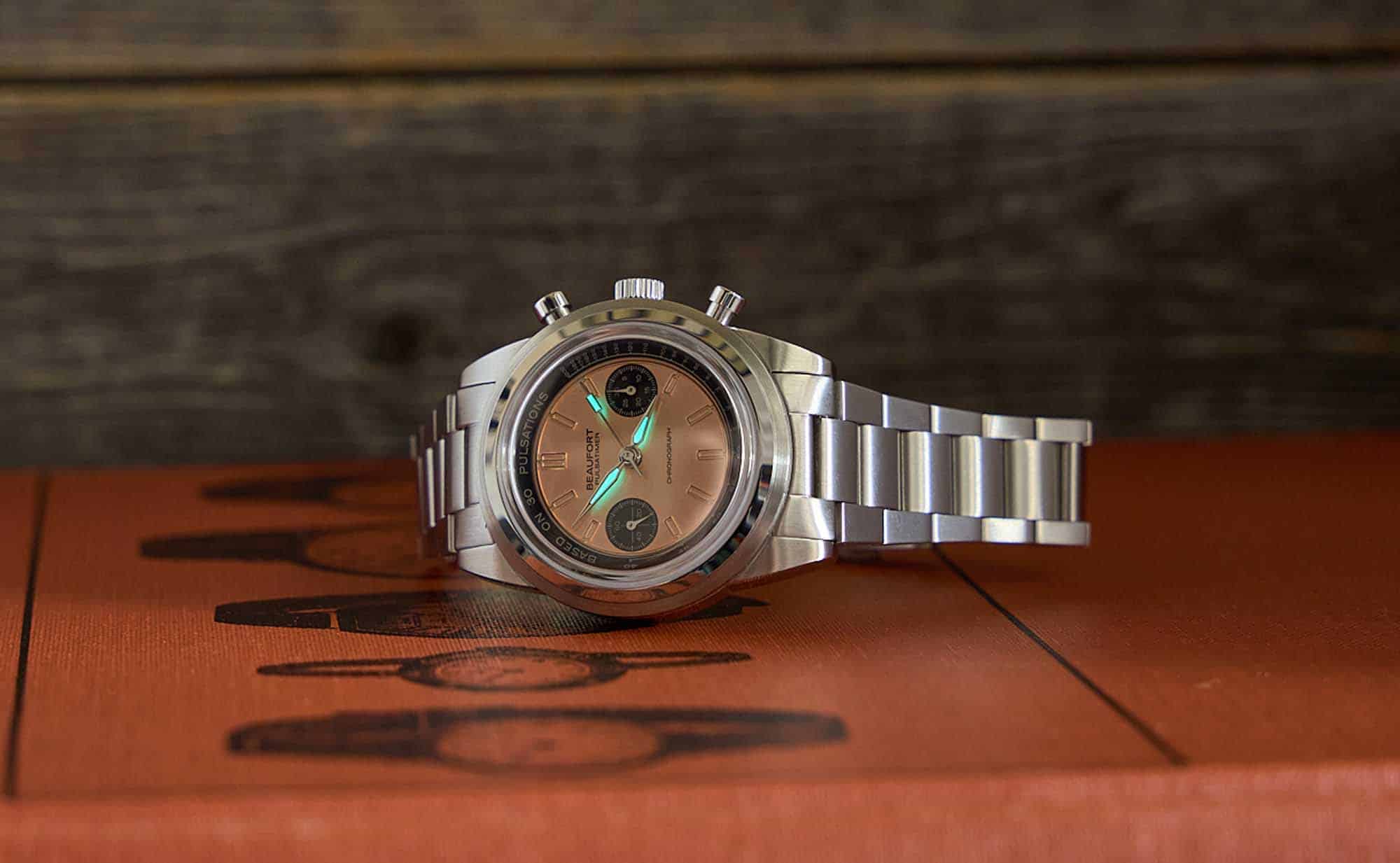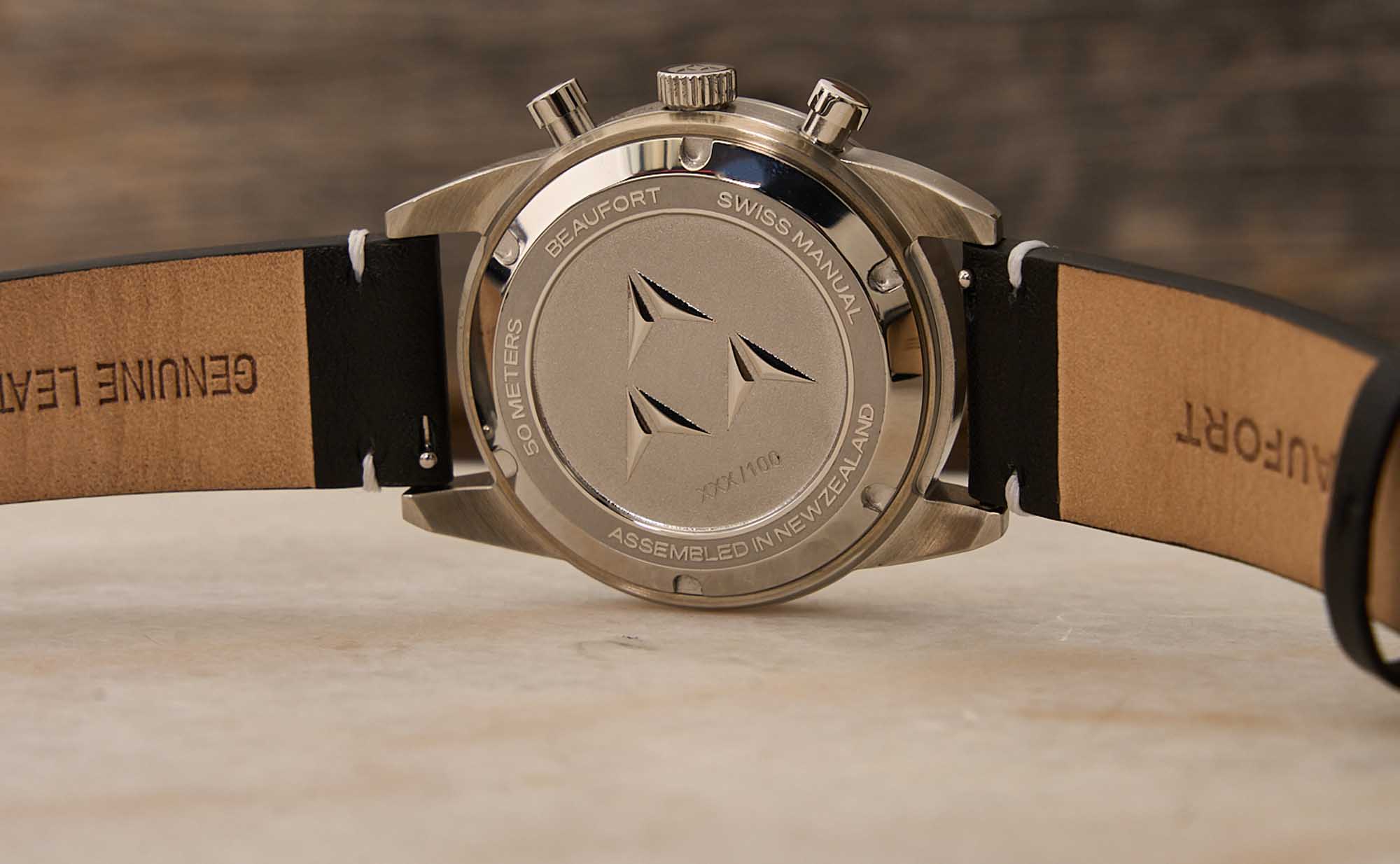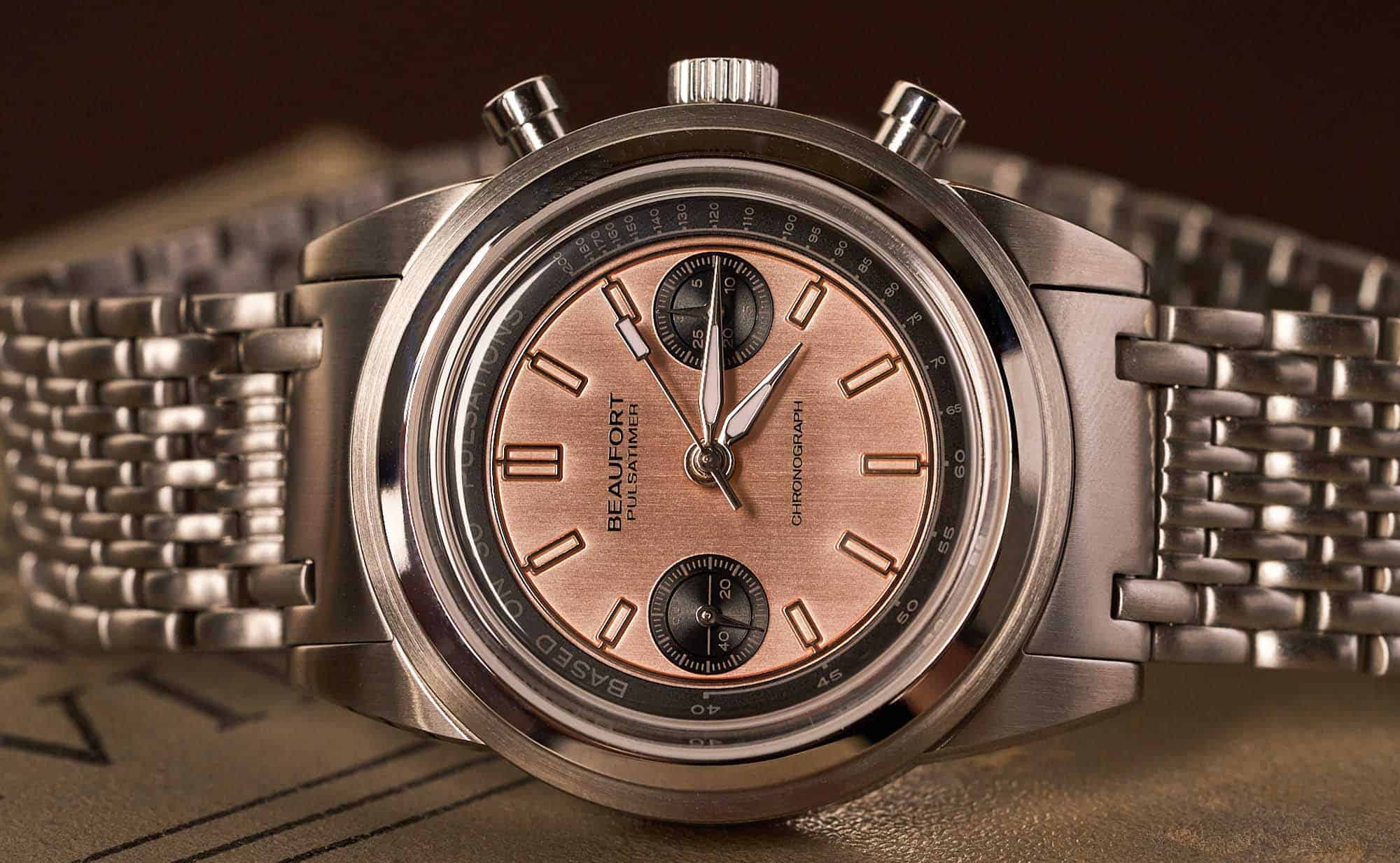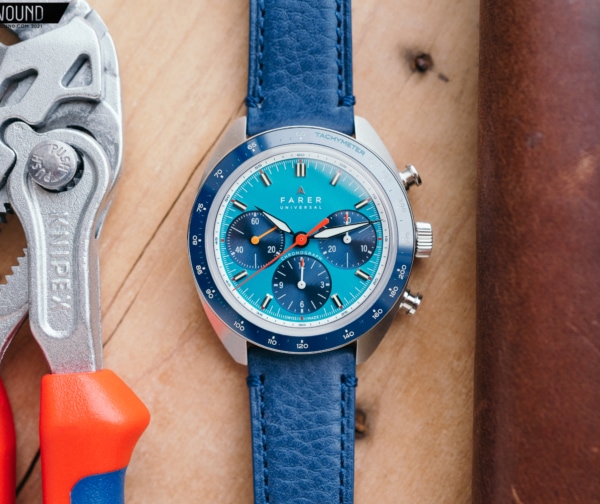Upon closer inspection of the dial you will find some significant departures from most chronographs. The dial itself appears much smaller than most dials inside a 39mm case, as the architecture of the bezel takes up a few more millimeters of real estate than usual. The indices around the dial are interconnected, in that they are all attached to one another by a continuous polished line circumnavigating the entirety of the dial. Each index is a rectangular block that shoots out and comes back with the same running line. It’s definitely the most intriguing aspect of the dial design, and it’s quite mesmerizing to follow that polished ring, especially as it shimmers in the light against the brushed backdrop.
Yet it is this design aspect that leads to two decisions that many might find unusual on a chronograph.
![]()
First, there are no minute markers aside from the indices dedicated to the five minute intervals. Some might find this to be frustrating as it means that you won’t be able to accurately gauge exactly what second the chronograph hand is on when you stop it. At first this decision confused me. I even glanced at the markers on the pulsometer to see if I was missing something. But they were simply not there. I suspected the decision was made to make the dial clean and cohesive, which is certainly not unprecedented. Take Zenith and their Chronomaster Revival Shadow, which also omits the minute track, while other colorways in the Chronomaster Revival lineup do not.
Secondly, and perhaps more noteworthy, is the matter of the 3 o’clock sub-register. This is the chronograph’s 30 minute counter, and it has 10 dial markers for every five minutes. This means that the sub-register hand jumps two markers for each passing minute. I activated the chronograph and watched as the chronograph seconds went around a few times and paid attention to what the hand in the 30 minute counter did. At the end of five minutes it correctly landed on the five, and after 10 minutes, the 10. But after one minute, the sub-register hand was on the second marker. After two minutes, it was on the fourth, and so on. I found myself confused at times regarding how many minutes have gone by without taking a few seconds to count.
![]()
These two decisions combined make it difficult to use the chronograph as an accurate timer, as at a glance it’s difficult to tell how many minutes went by, and because there are no minute markers on the outer track, it’s near impossible to tell exactly what second you’ve stopped the chronograph hand at.
I reached out to Beaufort to inquire about these stylistic decisions, and their director, Robert Kwok, was kind enough to explain his designs. Regarding the omitted minute markers, he told me that since the main use of the watch is the pulsations scale (on the chapter ring), the minute markers themselves would not be needed for this, and their inclusion would have disrupted the dial proportions and overall aesthetic. I agree with Robert that adding minute markers to that lovely polished ring connecting all the five-minute indices would have ruined the entire vibe of the dial. Which then caused me to question, was this the right design choice for this type of watch? I like using the chronograph function on my watches to time things. Even though I’m never timing anything important, I like the fact that I have a watch that can do it accurately if I wanted it to.
![]()









 Featured Videos
Featured Videos




